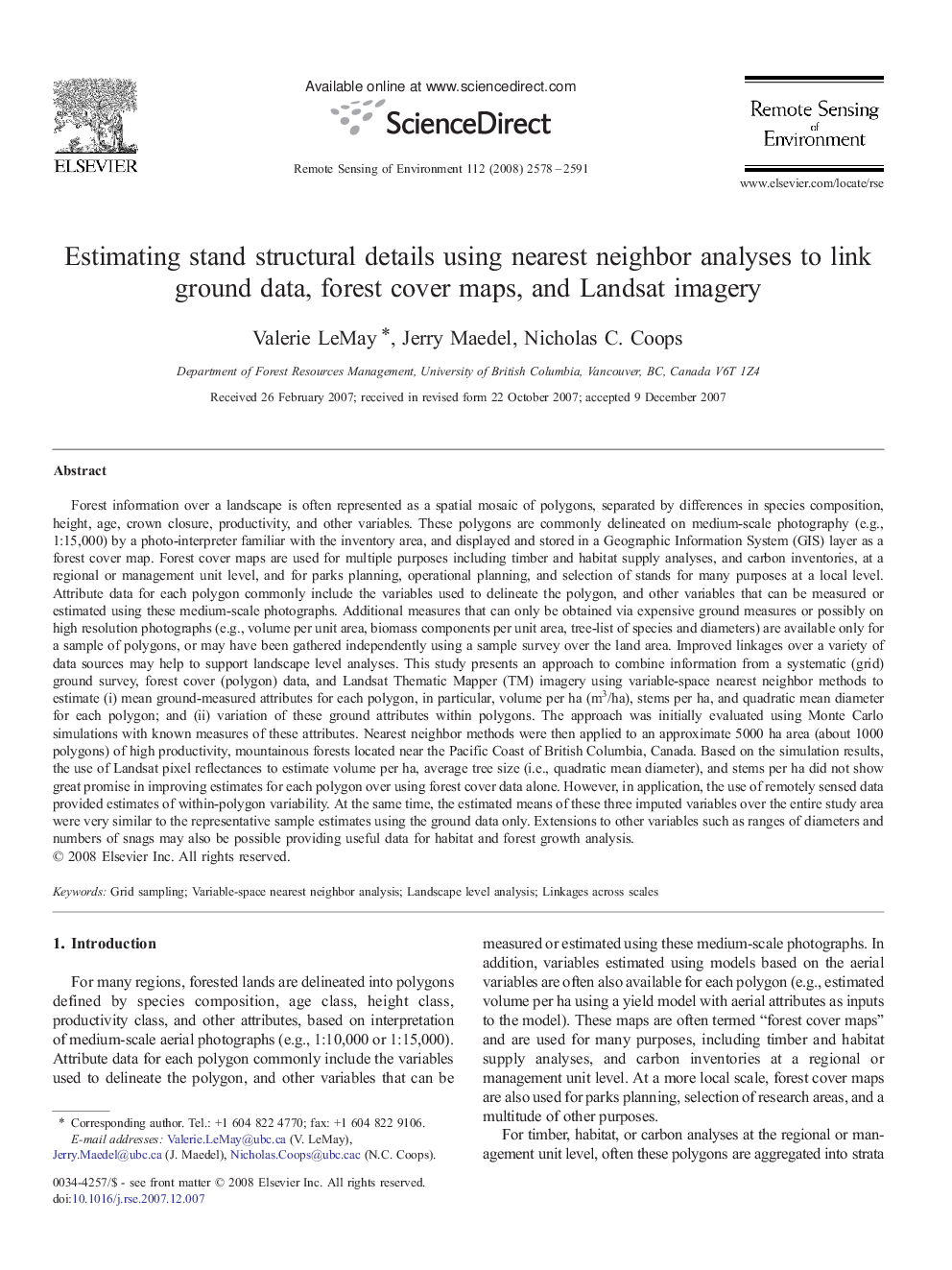| Article ID | Journal | Published Year | Pages | File Type |
|---|---|---|---|---|
| 4460619 | Remote Sensing of Environment | 2008 | 14 Pages |
Forest information over a landscape is often represented as a spatial mosaic of polygons, separated by differences in species composition, height, age, crown closure, productivity, and other variables. These polygons are commonly delineated on medium-scale photography (e.g., 1:15,000) by a photo-interpreter familiar with the inventory area, and displayed and stored in a Geographic Information System (GIS) layer as a forest cover map. Forest cover maps are used for multiple purposes including timber and habitat supply analyses, and carbon inventories, at a regional or management unit level, and for parks planning, operational planning, and selection of stands for many purposes at a local level. Attribute data for each polygon commonly include the variables used to delineate the polygon, and other variables that can be measured or estimated using these medium-scale photographs. Additional measures that can only be obtained via expensive ground measures or possibly on high resolution photographs (e.g., volume per unit area, biomass components per unit area, tree-list of species and diameters) are available only for a sample of polygons, or may have been gathered independently using a sample survey over the land area. Improved linkages over a variety of data sources may help to support landscape level analyses. This study presents an approach to combine information from a systematic (grid) ground survey, forest cover (polygon) data, and Landsat Thematic Mapper (TM) imagery using variable-space nearest neighbor methods to estimate (i) mean ground-measured attributes for each polygon, in particular, volume per ha (m3/ha), stems per ha, and quadratic mean diameter for each polygon; and (ii) variation of these ground attributes within polygons. The approach was initially evaluated using Monte Carlo simulations with known measures of these attributes. Nearest neighbor methods were then applied to an approximate 5000 ha area (about 1000 polygons) of high productivity, mountainous forests located near the Pacific Coast of British Columbia, Canada. Based on the simulation results, the use of Landsat pixel reflectances to estimate volume per ha, average tree size (i.e., quadratic mean diameter), and stems per ha did not show great promise in improving estimates for each polygon over using forest cover data alone. However, in application, the use of remotely sensed data provided estimates of within-polygon variability. At the same time, the estimated means of these three imputed variables over the entire study area were very similar to the representative sample estimates using the ground data only. Extensions to other variables such as ranges of diameters and numbers of snags may also be possible providing useful data for habitat and forest growth analysis.
